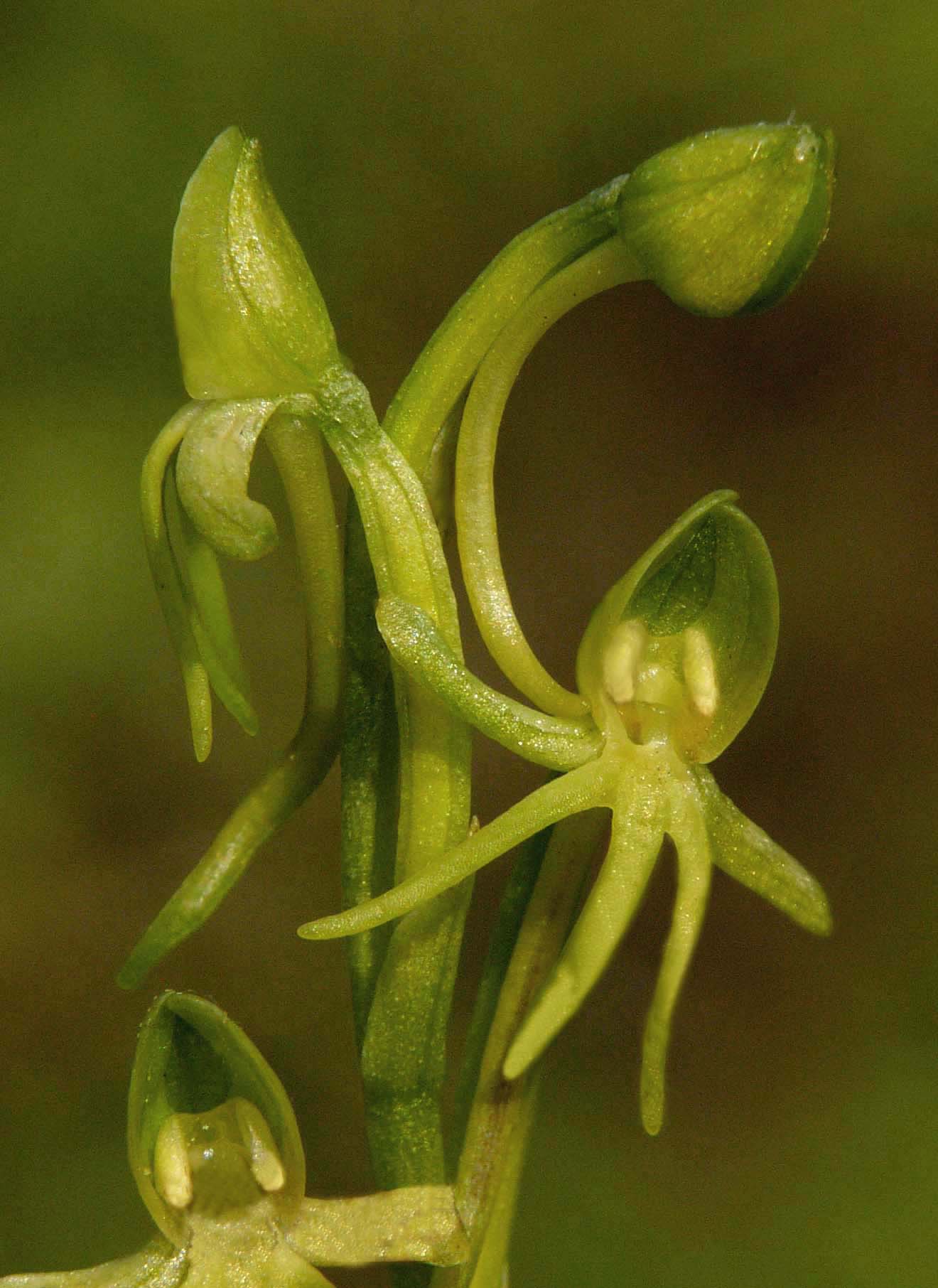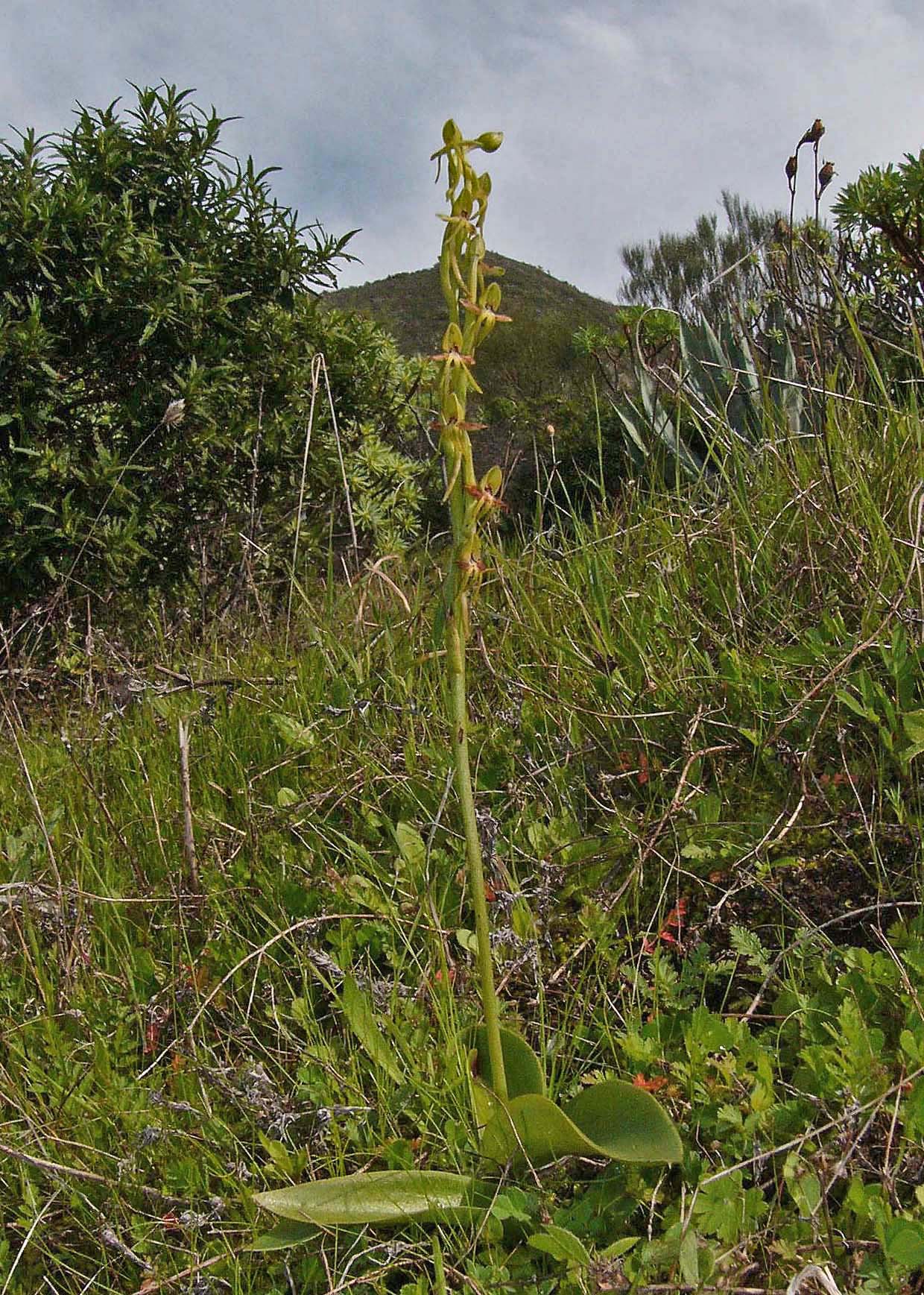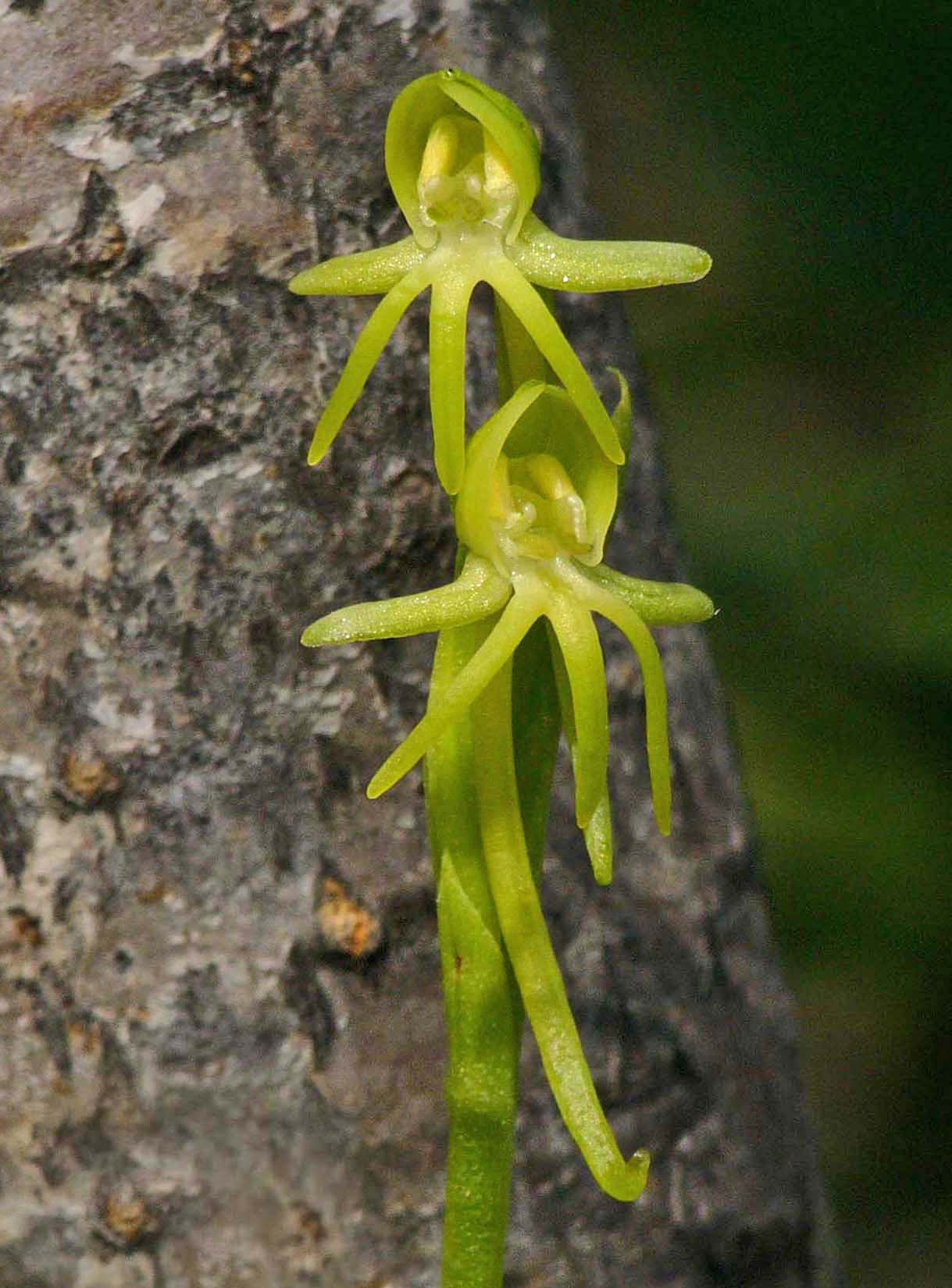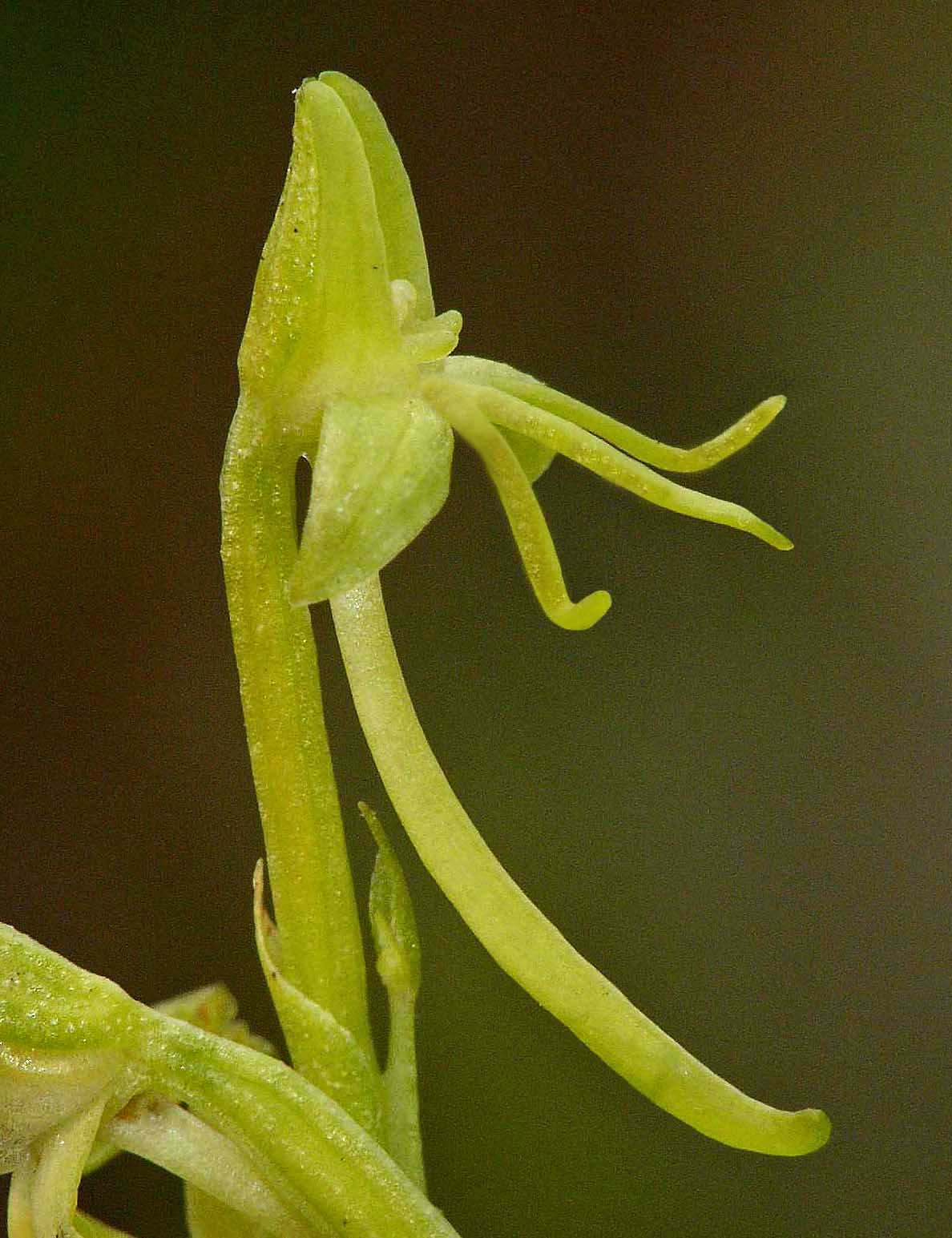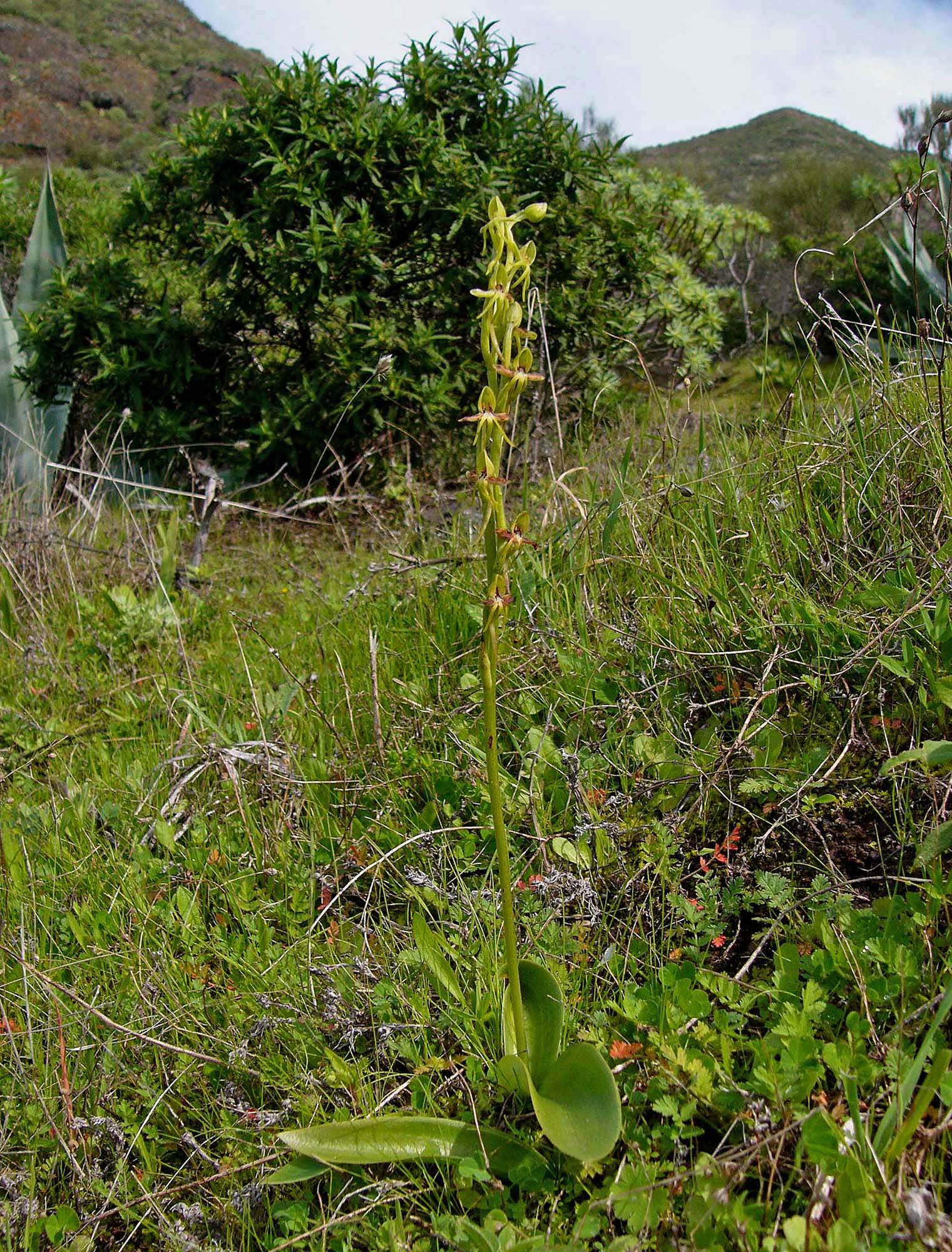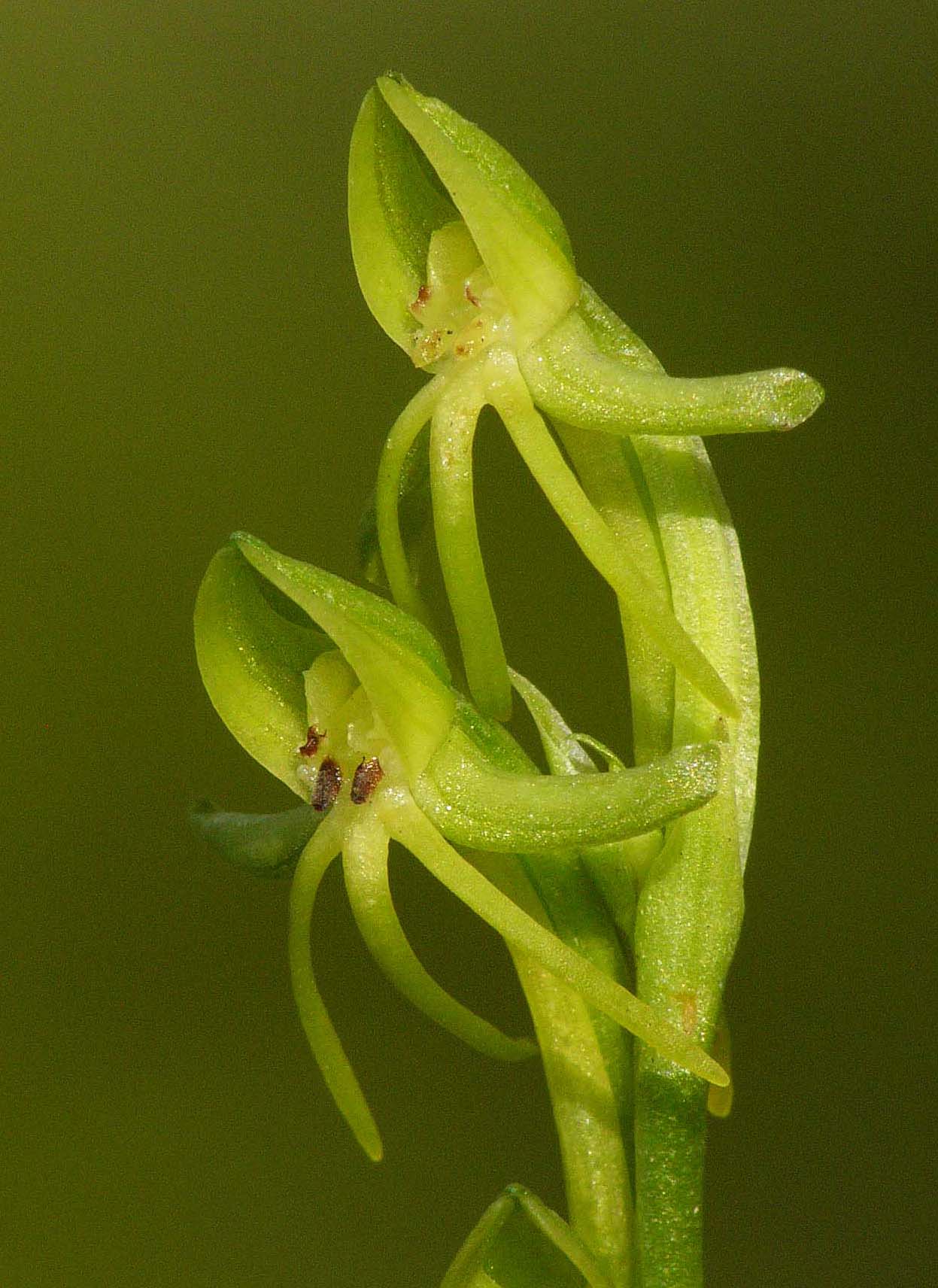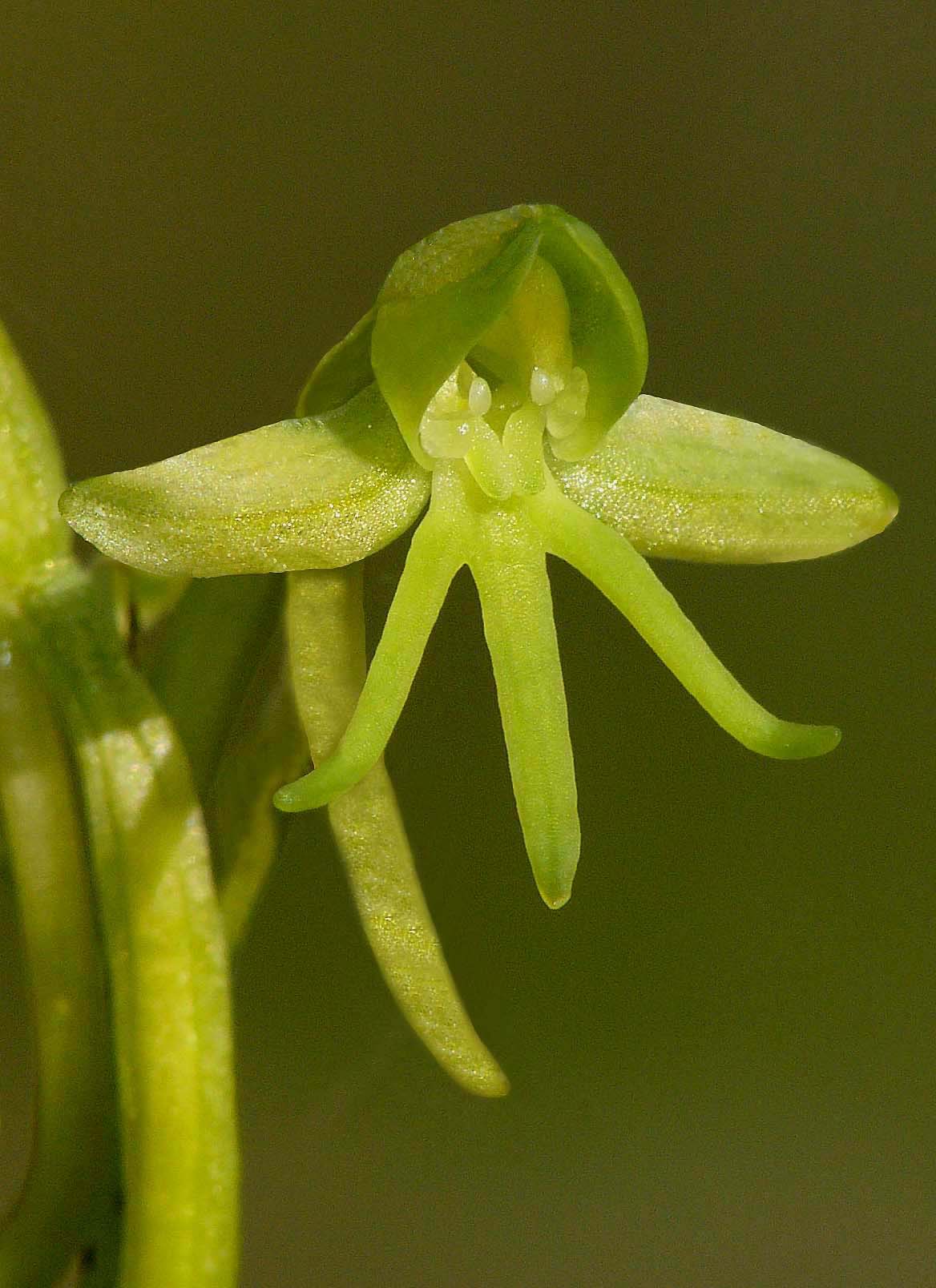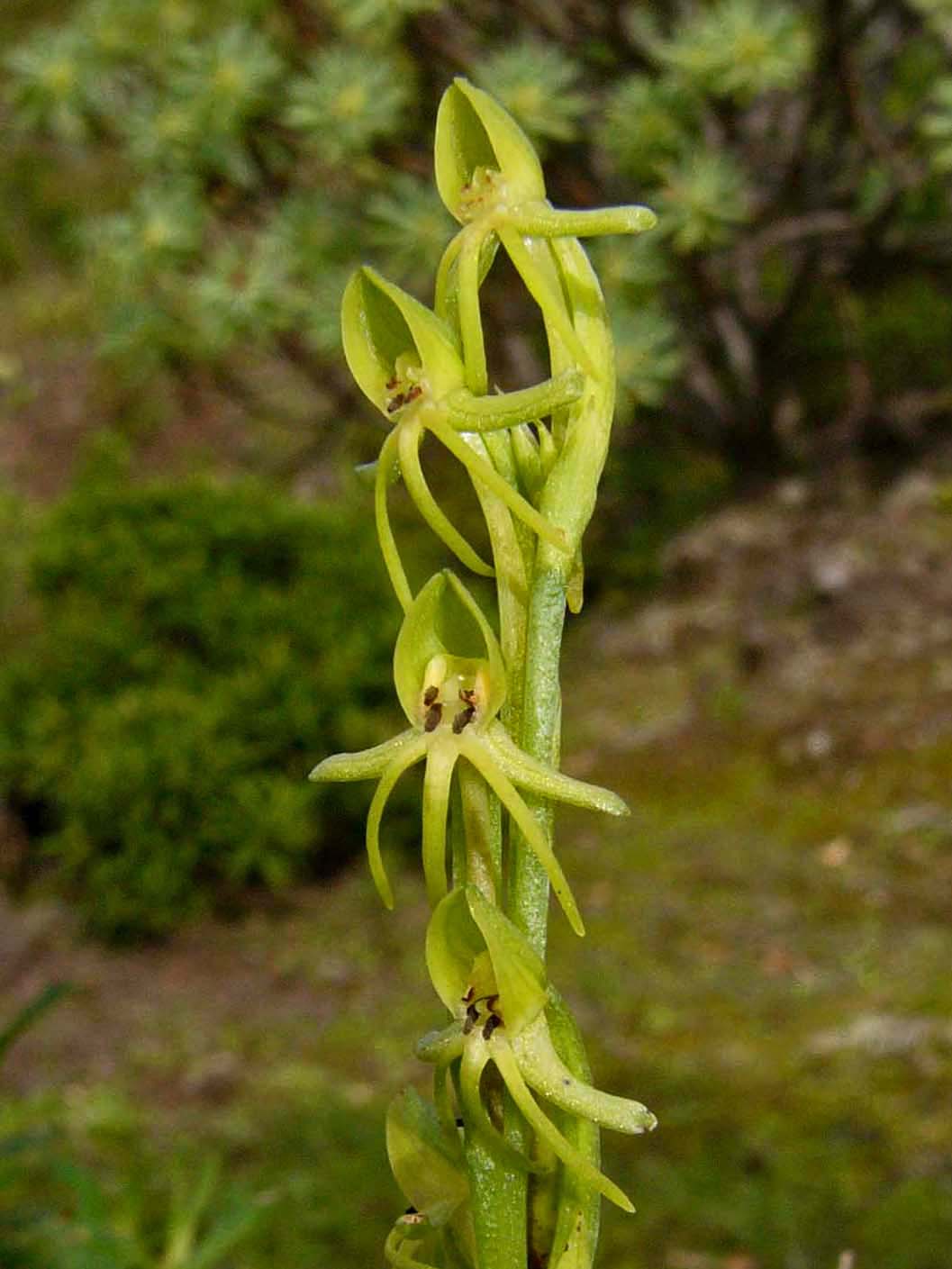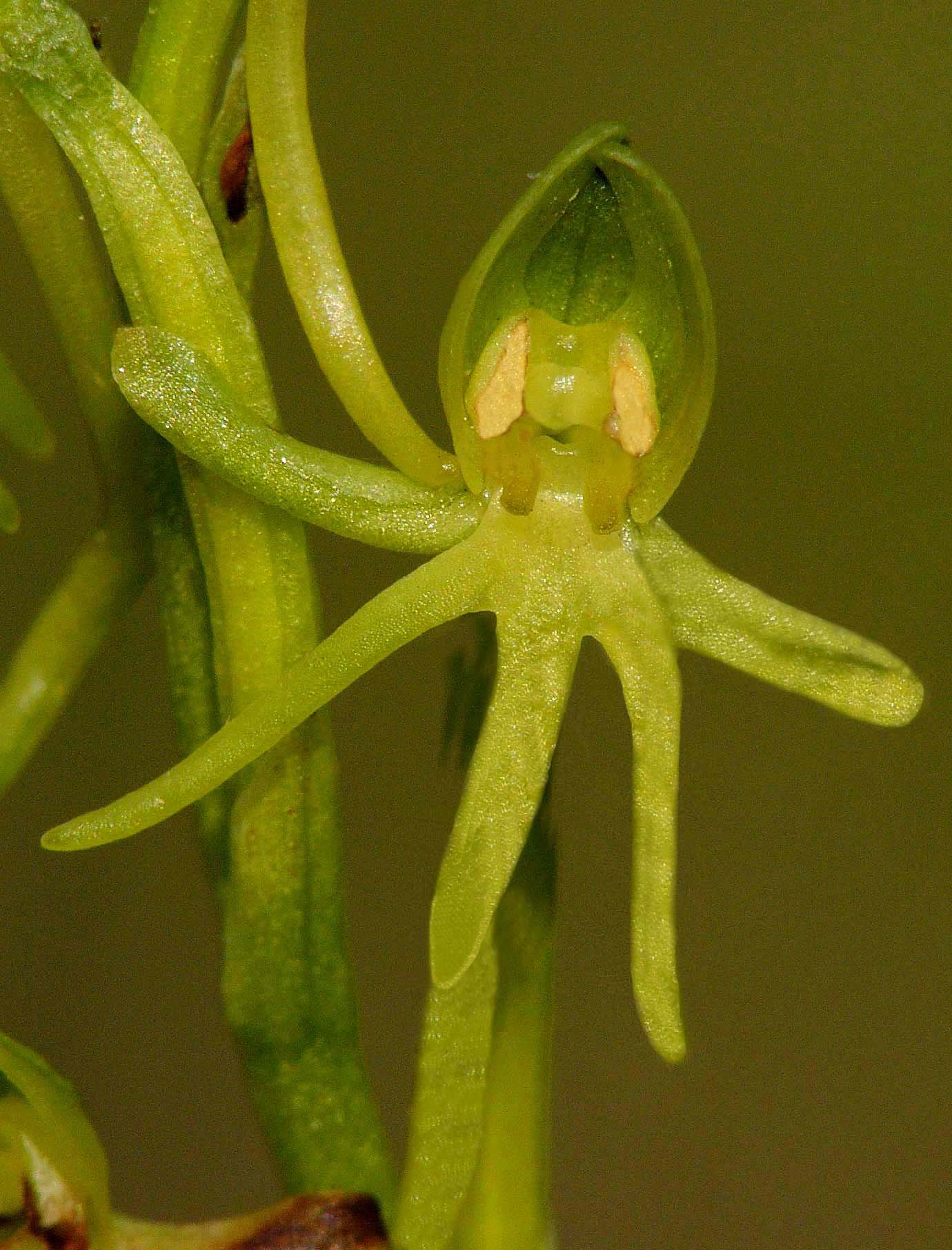H. tridactylites
was first described from the Canary Islands in 1835. Its
name literally means "with three fingers" and this is a reference
to the obvious three deep divisions of the lip.
The species is one of a trio of orchids endemic to the Canaries and is the single European representative of the Habenaria genus. This genus has a widespread tropical distribution of around 600 species and this population of H. tridactylites is thought to be the last remnant of a once much larger presence in the North Atlantic zone. Interestingly, analysis has shown that this species closest relative is H. aitchinsonii from Nepal.
This is a rare orchid throughout the Islands but seems to get more frequent towards the west of the archipelago where although highly localised can occur in reasonably large colonies. The Canary Islands offer a harsh environment for even the toughest vegetation and this species survives in a generally hostile landscape, often at relatively high altitudes (up to around 1500 metres). Unlike its two fellow endemics ( H. metlesicsianum and O. canariensis ) it avoids the bleakest and more exposed lava fields, preferring areas of thin grassland and light woodland. These conditions are still mildly acidic and although it can happily grow in full sun, it seems to seek out light shade where this is available.
The pictures all come from the Masca region of the island of Tenerife and date from the last week of January, at which time the plants were well past their best and only those positioned in some shade were worthy of recording. Regretably this particular colony was subsequently wiped out by road widening operations.
The species is one of a trio of orchids endemic to the Canaries and is the single European representative of the Habenaria genus. This genus has a widespread tropical distribution of around 600 species and this population of H. tridactylites is thought to be the last remnant of a once much larger presence in the North Atlantic zone. Interestingly, analysis has shown that this species closest relative is H. aitchinsonii from Nepal.
This is a rare orchid throughout the Islands but seems to get more frequent towards the west of the archipelago where although highly localised can occur in reasonably large colonies. The Canary Islands offer a harsh environment for even the toughest vegetation and this species survives in a generally hostile landscape, often at relatively high altitudes (up to around 1500 metres). Unlike its two fellow endemics ( H. metlesicsianum and O. canariensis ) it avoids the bleakest and more exposed lava fields, preferring areas of thin grassland and light woodland. These conditions are still mildly acidic and although it can happily grow in full sun, it seems to seek out light shade where this is available.
The pictures all come from the Masca region of the island of Tenerife and date from the last week of January, at which time the plants were well past their best and only those positioned in some shade were worthy of recording. Regretably this particular colony was subsequently wiped out by road widening operations.
